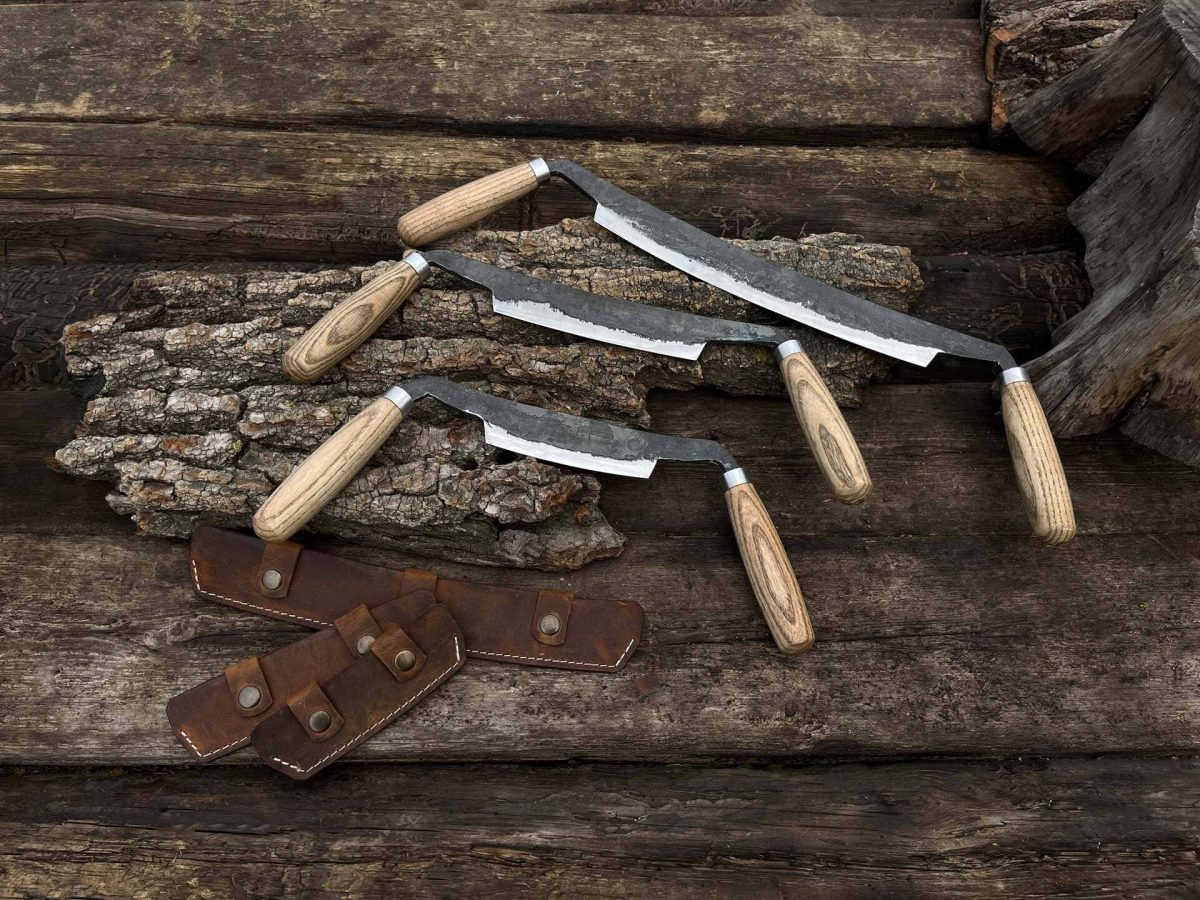The key to successful woodworking is to use sharp tools. Blades may require a little sharpening, known as “honing,” when making a spoon. Keeping a whetstone or wheel nearby is helpful, but running the blade’s side over a leather “strop” is often enough to maintain a sharp edge.
The key to successful woodworking is to use sharp tools. Blades may require a little sharpening, known as “honing,” when making a spoon. Keeping a whetstone or wheel nearby is helpful, but running the blade’s side over a leather “strop” is often enough to maintain a sharp edge.
Understanding the Importance of Wood Selection in Spoon Carving
Wood grain is the growth line of the tree and varies depending on the type of cut made. When choosing wood for spoon whittling kit with Forged Steel Tools, it is important to consider how the grain will affect the final look. An attractive grain pattern not only highlights the natural qualities of the wood but also adds character and personality to the finished piece.
Two main types of cuts affect grain patterns: radial and tangential cuts. In a radial cut, the top and bottom surfaces are perpendicular to the growth rings, resulting in parallel, striped grain patterns. On the other hand, a tangential cut, where the surfaces touch the growth rings, creates patterns of concentric rings or opposing arches depending on the piece’s orientation.
The Best Woods for Spoon Carving
Not all parts of a log or branch are equally suitable for carving spoons. The heartwood, the soft, unstable center of the tree trunk, is essential to avoid, as this area tends to warp and crack as it dries. The best option is to work with the heartwood (the dense inner part) and the sapwood (the younger, lighter wood surrounding the heartwood).
- Avoiding the Heartwood
The heartwood should be avoided when carving spoons due to its unstable nature. As the wood dries, the heartwood contracts unevenly, which can cause the spoon to crack and warp, affecting its functionality and appearance.
- Using Bark
The bark can be used as a decorative element on the spoon in some wood species. However, not all species allow this ornamentation, as the bark can peel or deteriorate over time.
Top 5 Woods Ideal for spoon carving kit:
- Paper Birch
- Silver Maple
- Black Cherry
- Black Walnut
- Apple
Preparing Your Wood for Spoon Carving
Dry wood carving is the process of spoon carving set with low moisture content, usually around 10% or less. Dry wood is generally more stable and less likely to change shape or warp over time, making it a popular choice for projects that require precision and durability.
Dry wood carving can be done using a variety of techniques and tools, including chisels, gouges, and knives. Each tool requires a different skill level and precision, so practicing and experimenting is important to find what works best for your project.
Dry wood is ideal for relief carving, which requires more detail. While possible, dry wood carving using planning knives is rare.
Conclusion
Understanding how wood warps as it dries and how different cuts affect the grain pattern is essential for craftsmen who want to carve durable and visually appealing wooden spoons. By carefully choosing which part of the tree to use and how to cut it, it is possible to influence the grain pattern and minimize warping, ensuring that spoons are functional and beautiful.



